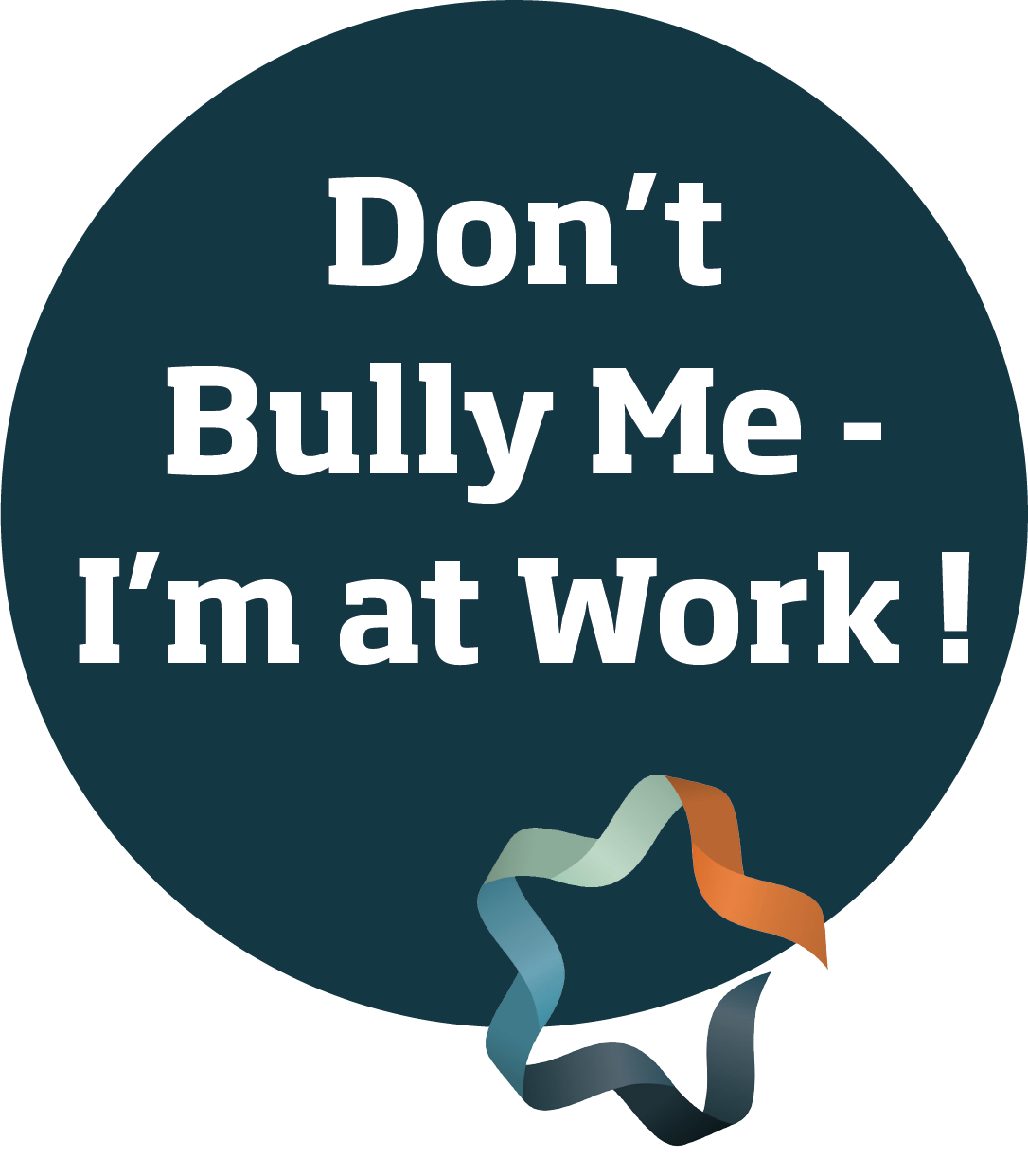This week is Anti-Bullying Week - One Kind Word

See the Anti-Bullying Alliance's 2021 campaign here
Bullying in the Workplace
People tend to imagine a work bully as someone that throws things at you, or swears a lot, but not all bullying is as obvious as this. Sometimes, bullying can be subtle, or a psychological power struggle between two individuals, or a whole team who are scared of their boss. Bullying or harassment can be identified where it makes someone else feel:
-
Intimidated
-
Offended

Let’s look at some of the characteristics of a workplace bully:
Characteristics of bullying behaviour (harassment) at work
-
Threatening behaviour – violence, intention or threat to be violent, hot-tempered, uncompromising, unable to take 'no' or 'no it's not possible' for an answer, dictatorial-‘shouty’ style, inappropriate or offensive physical contact.
-
Verbal bullying – shouting, swearing, threatening to terminate your contract of employment, public ‘dressing-downs’ in front of colleagues, humiliating someone, spreading malicious rumours.
-
Psychological bullying – using mind games to gain the upper hand or to feel more powerful/respected, setting-up a colleague or subordinate so that they will fail, unfair treatment, regularly undermining someone, denying someone’s training or promotion opportunities, picking on someone.
Bullies want to be listened to and respected, but they find it hard to communicate their ideas or needs to other people in a straightforward way. Often this is because their personality traits don’t allow them to communicate well with others – they are often misunderstood. They might have feelings of inferiority or superiority, their actions are taken the wrong way, they have little influencing skills and they find it hard to motivate others, or they over-compensate for their behaviour, or lack a caring nature – a lack of empathy and a lack of understanding of people tend to be at the heart of most situations.
The law is very clear about workplace bullying and it is not acceptable to manipulate a co-worker or colleague using intimidating or offensive behaviour. Of course, what one person finds intimidating, another person finds OK, so dealing with workplace behavioural situations under the law has given rise to a set of approved guidelines that addresses bullying (harassment) in the workplace and what to do about it.
Zero Tolerance of Bullying
Bullying itself is not against the law, but harassment is. This is when the unwanted behaviour is related to one of the following:
-
age
-
sex
-
disability
-
gender reassignment
-
marriage and civil partnership
-
pregnancy and maternity
-
race
-
religion or belief
-
sexual orientation
Employers are responsible for preventing bullying and harassment - they’re liable for any harassment suffered by their employees and because of this, most employers have zero tolerance of harassment in the workplace and take it very seriously. Employers are likely to have a section in their employee handbook setting-out employee guidelines and protocol to cover workplace harassment. Not only that though, it's good practice to develop a culture that is kind to colleagues in the workplace and to be caring. Every employee faces personal and work challenges and this is where "One Kind Word" resonates and it's a sentiment that all employees and employers can embrace.
Bullying is not tolerated, kindness is.
What employees should do if they’re bullied or harassed?
If you are being bullied, you should aim to sort out the problem informally first. If this fails, then you should discuss matters with your:
-
line manager (although sometimes the bullying is from a manager)
-
human resources (HR) department
-
trade union representative.
If this does not work, you should make a formal complaint using your employer’s grievance procedure. If this does not work and you are still being harassed, you can speak to a qualified employment solicitor and you can go on to take legal action at an employment tribunal. Similarly, if you have been wrongly accused of bullying someone at work, then you can defend yourself by speaking to a solicitor.

Vaishali Thakerar, Head of Employment, Lawson-West Solicitors, Leicester
“Being on the receiving end of harassment and bullying behaviour can be totally devastating in a work environment for any employee, causing depression, demotivation and in some extreme cases, suicide. Paradoxically, being labelled as a bully at work, particularly if you are unaware of your actions (or you are called a bully when you are clearly not one), can be a devastating accusation. Workplaces are all about people coming together to work side by side in harmony, but the reality is that this seldom happens. Where there is a mix of people and personalities, then motivations and sensitivities will run high. Harassment, misplaced or just, is far more commonplace than you think.”
Head of the Employment team at Lawson-West Solicitors, Vaishali Thakerar recommends taking time to discuss the situation with your HR team to understand the offending behaviour. Discussion and supportive communication can often help defuse situations from becoming formal grievances, giving members of staff time to offer their side of the story. If it does go as far as a formal grievance, then you may need a qualified employment solicitor to take the necessary defensive action and represent your side of things.
Helpful information:
What the government says about bullying
ACAS has also produced a guidance leaflet on bullying and harassment.
Download ‘Bullying and harassment at work: a guide for employees’ (PDF, 215KB)
ACAS (Advisory, Conciliation and Arbitration Service) provides a helpline for employee advice:
ACAS Helpline
Telephone: 0300 123 1100
Textphone: 18001 0300 123 1100
Monday to Friday, 8am to 6pm
Find out about call charges
Sexual harassment | Crime info | Victim Support
Taking action about harassment - Citizens Advice
Protection from Harassment Act 1997
View all

